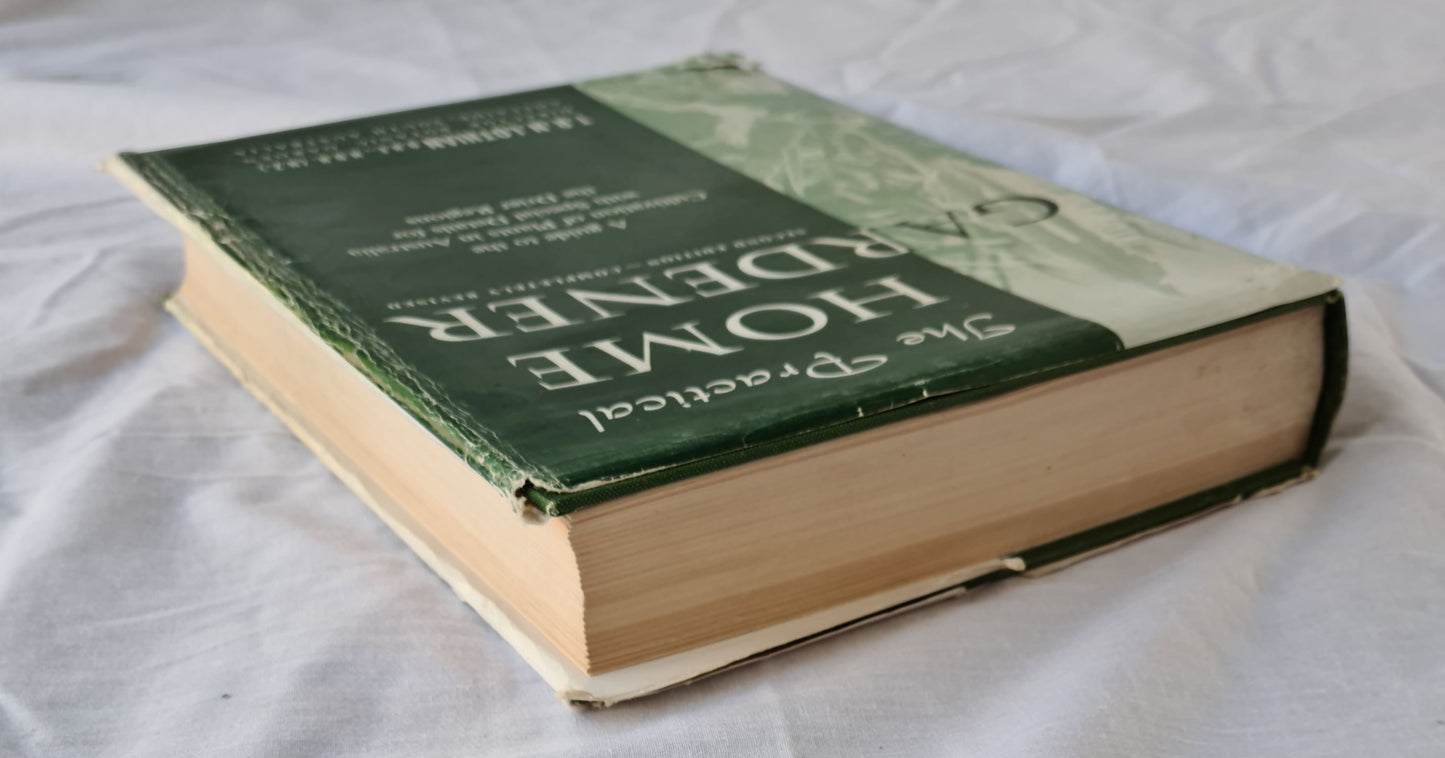The Practical Home Gardener by T. R. N. Lothian
The Practical Home Gardener by T. R. N. Lothian
Couldn't load pickup availability
The Practical Home Gardener
A Guide to the Cultivation of Plants in Australia, with special details for the Drier Regions
by T. R. N. Lothian
Lothian Publishing Co., 1963, [Second, Revised Edition], black and white photographic plates, black and white line drawings, colour photographic frontispiece, hardcover, dustjacket
Very Good Condition, some edge and shelf wear, some rubbing and bumping to covers, edges and corners, crease to front cover, tear to inside front cover, dustjacket shows some edge and shelf wear with creasing, rubbing, chipping, marking and tears to covers, edges and corners (see photographs)
“This is a book for the modern home gardener, containing the latest information based on recent scientific findings.
Here in everyday non-technical language are all the details you need to obtain the best results with your flowers, trees and shrubs, and fruit and vegetable gardens. This latest edition incorporates the most up-to-date information on all features of gardening. It includes for the first time, in addition to a general index, a botanical index listing all the botanical names used in the book.
Full details are given of the latest prove idea. “Gardening Without Digging”.
Comprehensive and numerous plant lists are given for conditions found in the drier parts of Australia, such as: Adelaide and South Australia (including Far West and North, Murray Valley, Whyalla, etc), North-west Victoria, Western New South Wales, South-West Queensland, Central Australia and Eastern Western Australia. These lists are published for the first time, as are the helpful notes on how to run a Flower Show. Additional plant lists are given for the higher rainfall areas of South Australia, also for Victoria and New South Wales (including Melbourne and Sydney), and similar areas. There are 3400 entries in the Botanical Index while the General Index covers an additional 3500 entries.”
Share
























